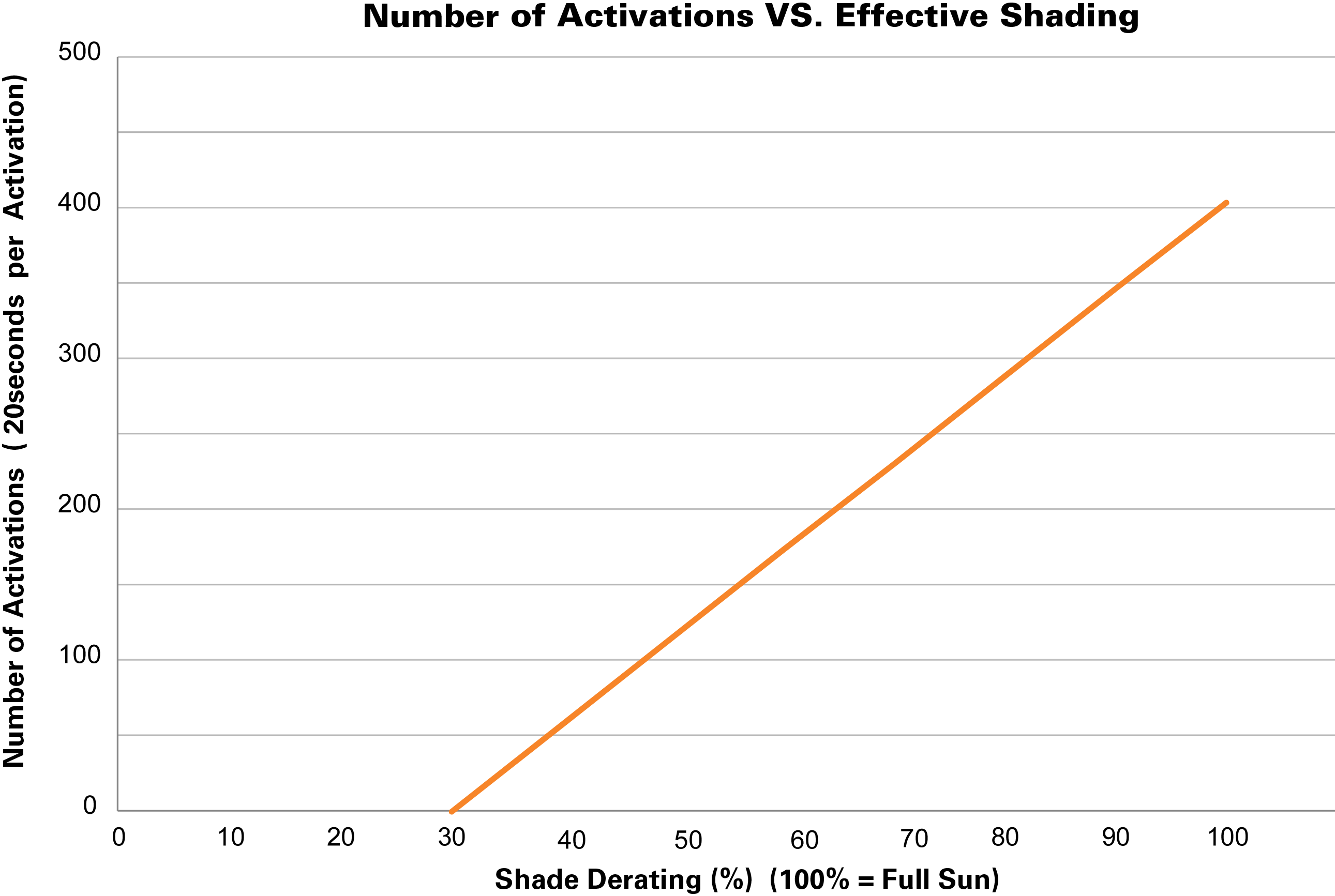THE IMPORTANCE OF CALCULATING HOW MUCH SUNLIGHT REACHES A SOLAR PANEL THROUGHOUT THE YEAR
ARTICLE 4 of 4 | This is the fourth article in a series of four on understanding solar power. Click here to start from the beginning.
Shading is one of the most important aspects to consider when choosing a solar-powered beacon. However, it is often overlooked in the design of projects and its omission can lead to unreliable system performance. A solar beacon that spends a portion of the day shaded by trees, buildings or other structures will gather less solar energy than expected. Let’s use a rectangular rapid flashing beacon (RRFB) for a crosswalk as an example since it has the most variables to consider. With less solar energy, the RRFB will support fewer pedestrian activations (per day) than it is capable of in full sun, due to the system’s battery depletion. RRFBs that have high efficiency central to their design can tolerate higher shade levels and are better suited for partially shaded installations.
Why is it important to consider shading?
Small amounts of shading on solar panels can significantly reduce the amount of energy a system can collect and produce than it would in full sun. As a result, the number of available pedestrian activations decreases. If the effects of shading are not accounted for in the design of RRFB and other flashing beacon projects, installed systems may be unable to meet performance requirements.
Before a system is selected, shading at the proposed installation location should be carefully analyzed. Tools such as Google Street View© and capacity calculators enable manufactures to evaluate the installation site and determine product suitability. A comprehensive site assessment should include effective shading (also known as shade de-rating) for the location. Effective shading, as detailed below, is a measure of energy into the system compared to the expected amount of sun (without shading) for a specific location at a given time of year.
 The chart here compares how effective shading influences the number of available activations over a 24-hour period. The lower the shade de-rating value at an install location, the lower the net energy in (within a 24-hour period).
The chart here compares how effective shading influences the number of available activations over a 24-hour period. The lower the shade de-rating value at an install location, the lower the net energy in (within a 24-hour period).
For example, a heavily shaded crosswalk with 40% shade de-rating means there will be a 60% reduction of net energy into the system.
As a result, the number of times the RRFB could be activated each day will be greatly reduced. This could lead to a system that is unable to meet required specifications due to the system’s inability to recharge, resulting in dead batteries. For this reason, it is important to choose high-efficiency RRFBs that can maximize the number of full-sun activations while providing steadfast performance in challenging environments.
A detailed Solar Power Report (SPR) of expected solar system performance should be readily available from manufacturers. To ensure your chosen system will operate as specified, site assessment and shading data should always be included in the solar power report.
At Carmanah, we have a number of tools to properly specify our products for your application and provide assurance for years of reliable performance and pedestrian safety.
If the effects of shading are neglected from the design of a project, installed beacons may be unable to meet performance requirements. Want to learn more about solar power? See how solar compares to AC now.